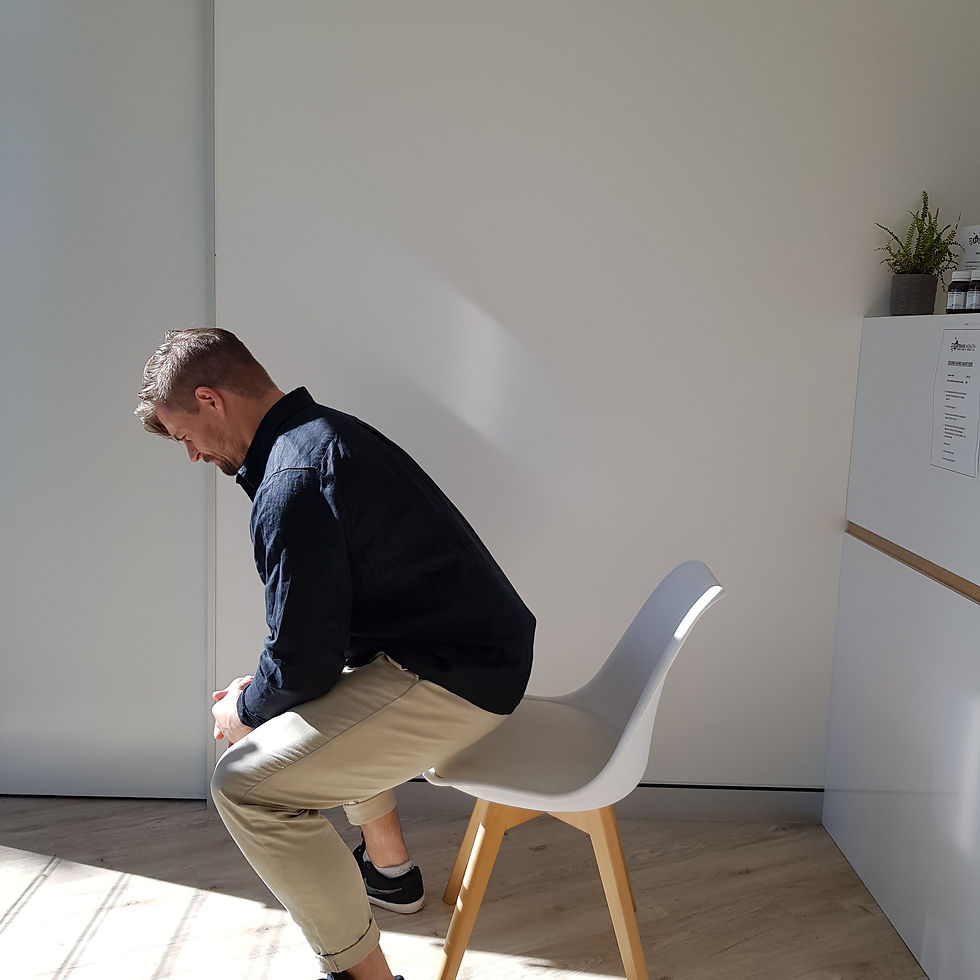Correcting 'the squat' to avoid injury
- Retrain Health
- Jul 2, 2020
- 3 min read
Updated: Jul 20, 2020

If you are a human (hello to all the non-humans out there reading our blogs), chances are at some stage you are going to need to squat.
The squat is a fundamental human pattern, that without knowing it, you already use every day for a range of tasks including getting on and off the toilet, sitting on and off the couch, single leg, double leg – basically anytime your knees bend.
Learning to squat efficiently is a valuable skill set for people of all ages and as you progress through the stages of squatting, you are likely to notice improvements in your hip and knee strength and range of motion.
To perform this movement, without injuring yourself, the best place to start is with the squat you can do – for almost everyone, this is a sit to stand movement.
Squatting 101
NB: We recommend having a chair handy to squat along with us.
Stand in front of your chair. Make sure it is at an appropriate height for you.
Choose a comfortable foot width – generally, this is about shoulder width or a touch wider.
Sit down on your chair, hold the position seated, then rise from the chair using your legs (Yes, your legs – not your back).
Your knees should not move inwards or outwards when squatting down, but rather they should align with your feet and track forward over your toes (see demonstration below for a visualisation!)
For rep 2, when sitting down, control the downward (eccentric) motion of the movement. I (Dan) like to use the idea that the chair is made of glass and if you plonk down onto it, it will break.
Once you have lowered yourself onto the chair, stand up, using your legs.
5. For rep 3, using the same chair, we can progress. Instead of sitting down on the chair, try just touching your butt on the chair. Then stand up.
6. From here, we can begin to make the squat a little more demanding by removing the chair.
Again, only squat as deep as you feel comfortable and in a body position you can maintain for the entire range of motion. When you are first learning the squat, I prefer to use the idea of staying tall – don’t let your trunk just flop forward.
Once you have mastered the basics, you can continue to challenge yourself in the following ways, by either going deeper, going slower, going single leg (lunge) or adding weight. These factors can be adapted and combined to suit your needs.
I recommend getting some extra help when progressing to make sure the exercise is carried out correctly to avoid injuring yourself. It’s handy to have a PT or someone who knows how to properly execute a squat watching as you might need some form of correction.
I like the quote from fellow meathead, Mark Bell, that “strength is never a weakness”, so get out there and get your legs strong and you’re likely to see daily function improve.
If you have a focus in mind, book a strength and conditioning session (with Dan) to develop an exercise plan to help you build skills and improve performance.

Retrain Health is based in the Northern Rivers, NSW. From our Byron Bay and Ballina clinics, our team provides a range of quality healthcare services and products.
Retrain Health offers osteopathy, remedial massage and strength and conditioning sessions with qualified practitioners.
If you are interested in finding out more information or would like to book an appointment, please contact the clinic by phone (02) 6680 7447, send us an email or click here to book an appointment online.




Comments